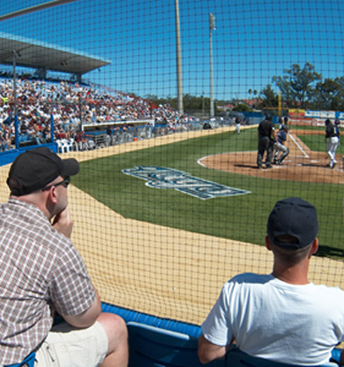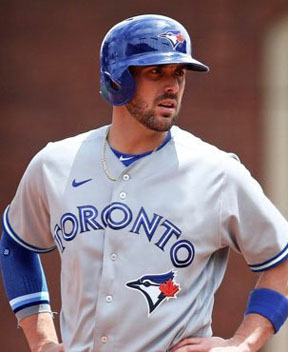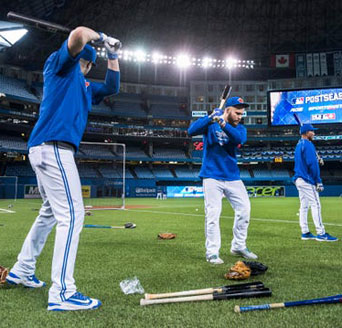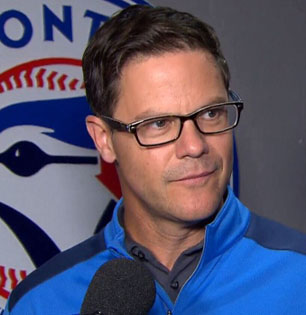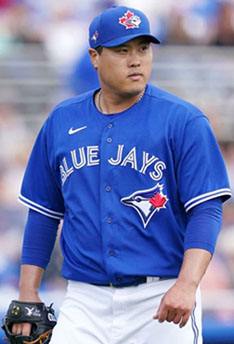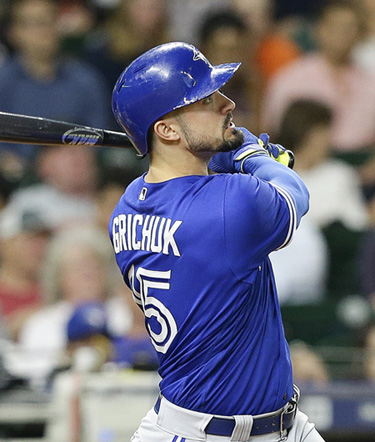Blue Jays 2020 – one part of major-league sports in the time of COVID
Jul 25th, 2020 | By Rob Sparrow | Category: Sporting Life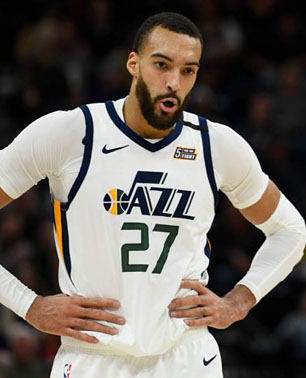
SPECIAL FROM ROB SPARROW, HIGH PARK, TORONTO. JULY 24, 2020. The sporting world, like most everything else, stopped earlier this year on March 11 when Rudy Gobert of the Utah Jazz became the first athlete to test positive for COVID-19. In many ways the shut down of the NBA, and the other sports leagues that quickly followed, was the proverbial canary in the coal mine, signaling the rapid spread and pernicious nature of the virus to the general public. Now after months of suffering, loss, turmoil and delays caused by the pandemic, the North American sports landscape is set to resume with baseball kicking it off this weekend.
Unlike the NHL (Toronto/Edmonton) and NBA (Orlando), Major League Baseball has opted not to go to the hub-city structure in its Return to Play plan. The notion of finding one or two locations to handle 30 teams of 60 players each with medical and coaching staffs, as well as umpires and other officials sounded like a good idea, but it just wasn’t feasible. The players made it clear that the hub-city plan was not something that they were comfortable with. Compounding this were the plans that had the players going to spring training sites in Arizona and Florida – two states that have recently seen significant spikes in positive COVID-19 tests.
In terms of play, one advantage MLB has over other major North American pro sports leagues like the NHL, NFL and NBA is that baseball is not a contact sport. Social distancing is easier to achieve in baseball, and following the guidelines set out by health authorities to further prevent the spread of the coronavirus is less of a chore for baseball players. They won’t sweat or breathe on one another, nor will players be making much contact with other players on the field; interactions in close proximity are pretty limited in the game.
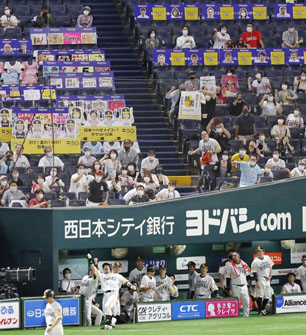
The success of baseball returning in Taiwan, Korea, and Japan shows that the virus can be somewhat managed. The question is whether major league players will be able to maintain the same level of discipline as the players in Asia, while living in a US environment where cases have spiked and most people are not nearly as disciplined. Containing the virus within the clubhouse and dugout will be critical, but more important will be the decisions players make away from the ballpark. They will go a long way toward keeping the game on the field.
Yet we should ask, with the pandemic ravaging throughout the US, is baseball at this time a good idea? “The virus is not going on a summer vacation,” says Dr. Bill Schaffner, a professor of infectious diseases at Vanderbilt. Baseball does not exist in a vacuum; studies have shown the average player will have approximately 100 different contacts during a typical day of the season. The sports reopening will thus add tens of thousands of interactions, each carrying a level of hazard every day.
The prospect of teams traveling in and out of highly infected areas acting as super spreaders may in fact cause more harm than good. And with a prospective second wave expected later in the fall, many believe that baseball has a zero chance at crowning a champion in 2020. Why then begin at all?
Training in the Rogers Bubble…then cast out from Canada
The path to the resumption of baseball was fraught with months of tone-deaf negotiations that further accentuated a toxic relationship between players and owners. Arguing over how to split the pot of a $10 billion dollar pie, while millions lost their jobs, generated more disgust and disdain from the general public.
What was finally agreed on was a 100+ page document outlining health and safety protocols. MLB will have a dedicated testing facility in Utah and players will be tested for the virus every other day. Yet when testing began, the Blue Jays and Phillies were shown to have outbreaks at their spring training sites and the facilities were quickly shut down. Further testing revealed 28 of 30 teams having at least one positive COVID test – showing that even with diligent regular testing, there is still room for the virus to spread quickly.
It was the Florida spring training outbreaks that led teams to move their summer camps to their respective major league facilities where teams could have more control over their environment. For the Blue Jays, the Rogers Centre training bubble was approved by the Public Health Agency of Canada, issuing a national interest exemption to the team’s players and staff members specific to the pre-season training. What was explicit in the approval was that the mandated 14-day quarantine for arriving from another country, to be served in the Rogers Centre and adjoining Marriott hotel.
As the Blue Jay front office lobbied for a national exemption to be granted for the regular season play, what was not so clear to the players was the extent of the quarantine for cross-border travel. “We were told two weeks…not all summer…all summer is a bit much,” new Blue Jay Travis Shaw tweeted. A further tweet from him declared that a season of quarantine “was not an option.”
Shaw was caught off-guard in his belief that the team’s 14-day quarantine requirement would be reset each time the club went back-and-forth across the border. And this was something Toronto management, in damage control mode, worked through with the team in a series of meetings. Yet Shaw had articulated what many players were implying in social media. “Guys are going to be walking around in full disguise,” tweeted former Blue Jay Marcus Stroman, concluding that “the quarantine just doesn’t seem realistic.”
With that in mind – and although both the city and provincial governments had signed off on the Blue Jays plans to play the regular season at Rogers Centre – the federal government denied their request to stay at the Centre for regular season play. Marco Mendicino, Minister of Immigration, Refugees and Citizenship, declared that the circumstances did not warrant a border-crossing exemption, particularly in light of the amount of cross-border travel needed and the risks that remained. Mendicino said in a statement : “Unlike pre-season training, regular-season games would require repeated cross-border travel of Blue Jays players and staff, as well as opponent teams into and out of Canada. Of particular concern, the Toronto Blue Jays would be required to play in locations where the risk of virus transmission remains high.”
Mendicino went on : “Canada has been able to flatten the curve in large part because of the sacrifices Canadians have made … We understand professional sports are important to the economy and to Canadians. At the same time, our government will continue to take decisions at the border on the basis of the advice of our health experts in order to protect the health and safety of all Canadians.” Mendicino also indicated that the government is willing to reconsider this policy if the Blue Jays make the playoffs, and the risk of the virus spreading has diminished.
Just like that, the Blue Jays became baseball’s nomadic warriors in search of a home south of the border.
Blue Jays…a team without a home
In their search for a new home, Blue Jay players have outlined to management their preference to play in a major league facility. “There are several scenarios,” GM Ross Atkins has said. “One is that we could be in a minor-league facility. The most likely there would be Buffalo, although the stadium has numerous infrastructure challenges. Two is we’re in a major-league facility that is obviously not our typical home stadium, but we make it our home stadium, with some potential hybrid, with some potential small schedule adjustments that would involve Major League Baseball and would involve, obviously, contributions and open-mindedness from other teams. We’re working through all of those alternatives and we will obviously have a much more extensive update for you when we have a better picture of what’s the most realistic.”
Earlier this week it had looked like the team had landed in Pittsburgh. The Blue Jays and Pirates were waiting to see if they had permission from the state to proceed with a plan to have PNC Park fill in for the Rogers Centre. But the request was turned down by Pennsylvania health officials on Wednesday. As explained by secretary of health Dr. Rachel Levine : “In recent weeks, we have seen a significant increase in the number of COVID-19 cases in southwestern Pennsylvania. To add travellers to this region for any reason, including for professional sports events, risks residents, visitors and members of both teams.”
A potential hybrid Baltimore-Washington scenario at Camden Yards and Nationals Park was also looked at. In Baltimore, only series on July 29-Aug. 2 and Aug. 14-16 were in conflict, but nearby Washington could be used for those, as the Nationals’ scheduling conflicts don’t pop up until Aug. 25-27, Sept. 7-13 and Sept. 21-27. According to state spokesman Michael Ricci : “Maryland Stadium Authority is talking to the Orioles about it, so that’s where the discussions currently are on the state level, and then I think once they’ve kind of come to an agreement on something they’ll bring it to the governor and the health department.”
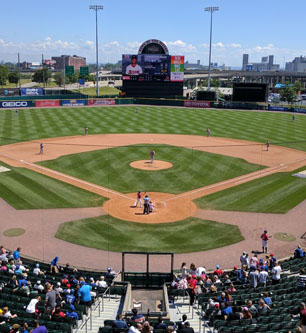
Yet it was not surprising that the Blue Jays also found it hard to get clearance to play in Baltimore. COVID-19 cases doubled in the city in the past month. Masks will be mandatory in indoor public spaces starting Friday, and Mayor Bernard Young announced a halt to indoor dining, about a month after allowing restaurants to open half full.
Finally, the club needed at least some resolution. The lingering uncertainty for staff and players alike brought its own health concerns for the team – which will be traveling in highly infectious areas where some cities may return to lockdown. So on Friday just after noon it was announced that the team “will host the greater part of its home schedule at Sahlen Field in Buffalo, home of the club’s Triple-A affiliate Buffalo Bisons.”
Fantasy Days
So if the games are in fact to be played, what should we expect from this version of the Toronto Blue Jays? In the absence of any real baseball over the past three months, I dusted off an old Statis Pro Baseball board game from a simpler time (my adolescence) and simulated the Jays first half of the season to some surprising results.
The Blue Jays, who were a rather disappointing 67-95 in 2019, performed much better than expected in the first half of the 2020 simulated season, posting a record over .500 (50-46) at the all-star break. Propelled by a 17-8 June, the Jays showed that they belong in the mix in a mid-tier of teams, playing exceptionally well against those teams that were below them in the standings, while struggling against some of the powerhouse teams in the league.
Some observations from the simulated games that may translated to this upcoming season include:
- Starting Pitching – The off-season addition of Hyun-Jin Ryu, Chase Anderson and Tanner Roark created a pitching depth lacking last year. Ryu was a legit ace in the simulated games going 7-3 with a stellar 1.89 ERA. Matt Shoemaker, was a solid No. 2, posting a 7-4 record and 2.09 ERA, while No. 3 starter Chase Anderson also won 7 games and led the team with 109 strikeouts in 100 innings.
- Relief Pitching – The addition of Rafael Dolis (2.11 ERA) and Anthony Bass (2.93 ERA) drastically improved the bullpen that struggled last year. Both Dolis and Bass excelled in the 7th and 8th innings as set up men for closer Ken Giles who converted on 23 saves for the simulated half season.
- Offence – There’s a lot to like about the top of the Blue Jays batting order, with youngsters Cavan Biggio, Vladimir Guerrero Jr, and Bo Bichette, poised to take the next step. Bo Bichette was their best hitter in the simulated games (.296 BA, 21 HR, 44 RBI) and took off when they moved him from leadoff to the run producing third batting spot. Cavan Biggio exceled in the leadoff spot and led the team in walks with 45 followed second by Vladdy with 31. Those top three set the table for power hitters Randal Grichuk (24 HR, 62 RBI), Rowdy Tellez (22 HR, 38 RBI), and Lourdes Gurriel Jr. (19 HR, 48 RBI).
- Defence – The left side of the infield struggled with Bo Bichette leading the team with 17 errors at shortstop. Vladimir Guerrero Jr also had his difficulties at third base with 11 errors in limited play. Vladdy was much more productive when they moved him away from the hot corner, which could be somewhat of a preview of his upcoming shift across the diamond to first base.
Overall, any simulation cannot truly replicate the day-to-day grind that is Major League Baseball, yet it does give us some positive Blue Jay indicators to keep an eye on as the real games begin to unfold.
Outlook for 2020
Back when the season was shut down in March, the Toronto Blue Jays were given a 0.9 per cent chance by FanGraphs to make the postseason in the usual 162-game marathon that’s designed to separate the contenders from the pretenders. Now, in an abbreviated 60-game sprint, and with the playoff field increased from 10 to 16 teams, that probability number has jumped all the way to 29.5 per cent!
The truncated schedule will see the Blue Jays playing their games against the perennially tough AL East (New York, Boston, Tampa Bay, Baltimore) and the well-balanced NL East (Washington, Atlanta, New York Mets, Philadelphia, Miami). This unbalanced schedule will have them facing four tough teams (Yankees, Rays, Nationals, Braves), three similar teams (Red Sox, Mets, Phillies) and two easier teams (Orioles, Marlins).
This 60 game season will be a different beast than the 162-game grind, and in its inherent small- sample-size randomness there is both opportunity and risk. Beyond that, the pandemic is a variable that can immediately change the balance of power in a division or a league – or submarine the entire venture entirely.
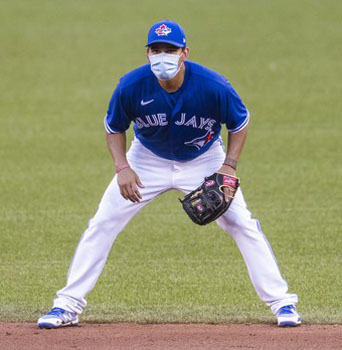
And that will be the underlying story. Everyone involved recognizes that baseball in 2020 – sports in 2020 – is a house of cards. Two government health organizations have already outlined the danger of travel and infection to the general public. Combined with COVID cases spiking in cities such as Miami, Houston, and Los Angeles, all it takes is one municipality (or any number of them) to threaten the entire endeavour. According to Dr. Andrew Morris, medical director of the antimicrobial stewardship program at Sinai Health System/University Health Network and an infectious diseases professor at the University of Toronto : “I’m such a sports fan, but I think that the realities of what is going on right now in the south and southwestern US prevents any of those locales from being involved in professional sports at this point in time.”
Baseball is also in a difficult position. Quarantining players who come in contact with infected individuals could force MLB to shut down entire teams. In fact, two hours before baseball’s opening game Thursday, Washington National’s slugger Juan Soto was informed that he had tested positive. He had been around the team this whole week. Now his teammates will get tested and await the results that will take 48 hours to process.
The situation is precarious. There may be a rash of positive tests that could engulf a team, and at some point it could become too overwhelming to continue. At what point do any of the major sports leagues cancel their seasons? Mass outbreaks? How many is “mass”? Serious Illness? Death? It’s a morbid point of conversation – which has allowed everyone to avoid it. “This virus is one that keeps fooling us,” says Dr. Anthony Fauci, director of the National Institute of Allergy and Infectious Diseases in the USA today.
So this year will be unlike any other the Blue Jays have had in their history. If it is played to its fruition the team will be on the road for its entirety – which may act as a bonding agent for the young team. And although it most likely will not result in a playoff appearance this year, this galvanising of the youthful core may pay off in the future, where hopefully the virus will subside, and the Toronto Blue Jays will once again be able to play their games in the true north strong and free.
Rob Sparrow is a Toronto marketing analyst and noted local authority on the sporting life.
